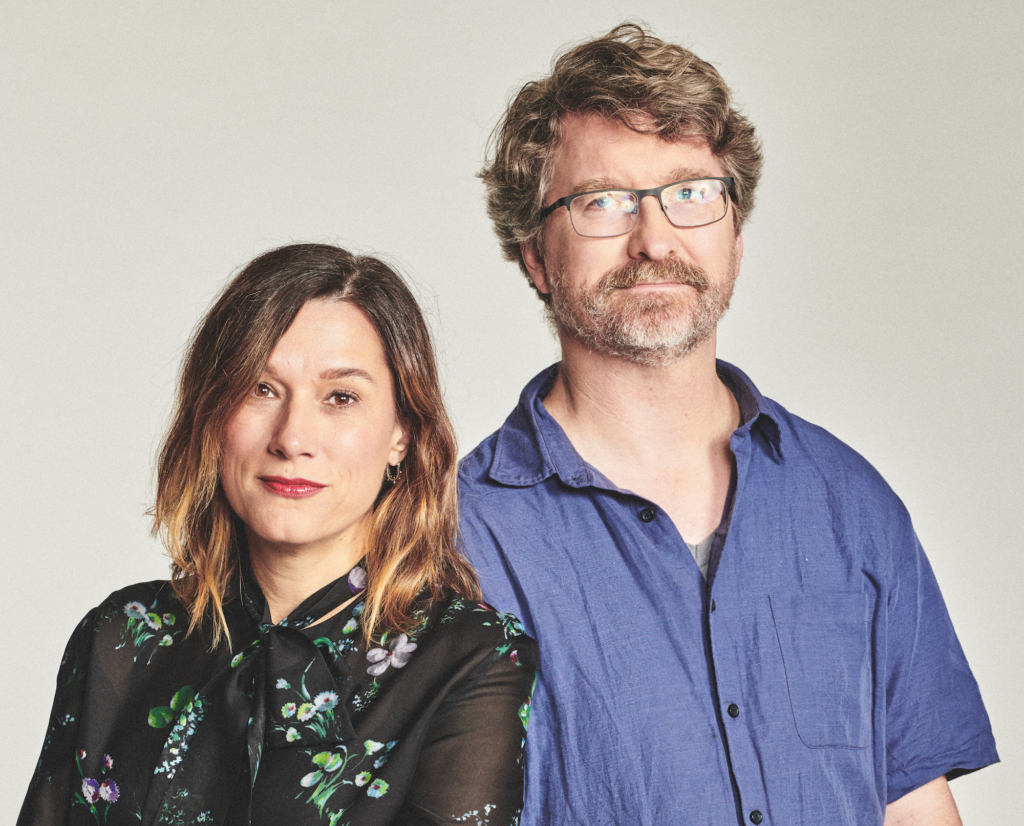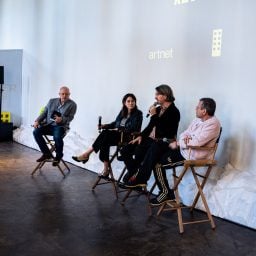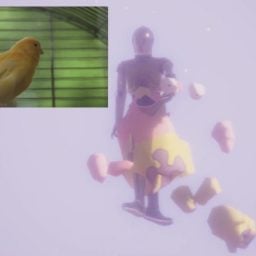If you’ve ever dreamt of being a big enough deal to donate a work of art to a major museum, artists Jennifer and Kevin McCoy can now grant your wish—no matter how low your net worth might be.
Public Key/Private Key, their recently launched project for the Whitney Museum of American Art’s new-media portal, takes on thorny questions about who gets to shape the museum collections that inform our collective understanding of artistic merit. And it does so specifically by handing a little bit of power back to those of us in the 99 percent.
Two conjoined components from two different technological eras give Public Key/Private Key its conceptual force. The first is a unique 16-millimeter film (housed in a classic metal canister) that will physically reside in the Whitney’s collection. The second is a set of 50 digital certificates, each of which confirms the bearer as a co-donor of Public Key/Private Key.

Jennifer and Kevin McCoy, Still from Public Key/Private Key, 2019. Image courtesy of the artists.
While most people need a hefty bank account to become museum donors, Jennifer and Kevin McCoy ask only that you make an intriguing pitch. On their website, the McCoys issued an open call for essays in which interested parties can explain why they deserve a donor credit for the piece. The artists will award certificates to the 50 people who make the most compelling written arguments in the first six weeks after the project’s March 5 launch. (They had received about 40 submissions by publication time.)
Public Key/Private Key’s themes about patronage and institutional influence have become even more urgent due to events now circling the Whitney’s boardroom. The museum is under fire from Decolonize This Place and other cultural-activist groups over its ties to Warren B. Kanders, the vice chair of the museum’s board and owner of Safariland, a manufacturer that has supplied tear gas and other defense products to US Customs and Border Protection. Although the Kanders controversy did not ignite until after the McCoys’ project was already well underway, the artists nevertheless hope it can shed at least a faint light on a different path forward.
“I don’t think people realize how small these circles are that control the culture we see,” says Jennifer McCoy. “I hope that by letting 50 more people who don’t have money through the [patronage] door that maybe that’s helping.”
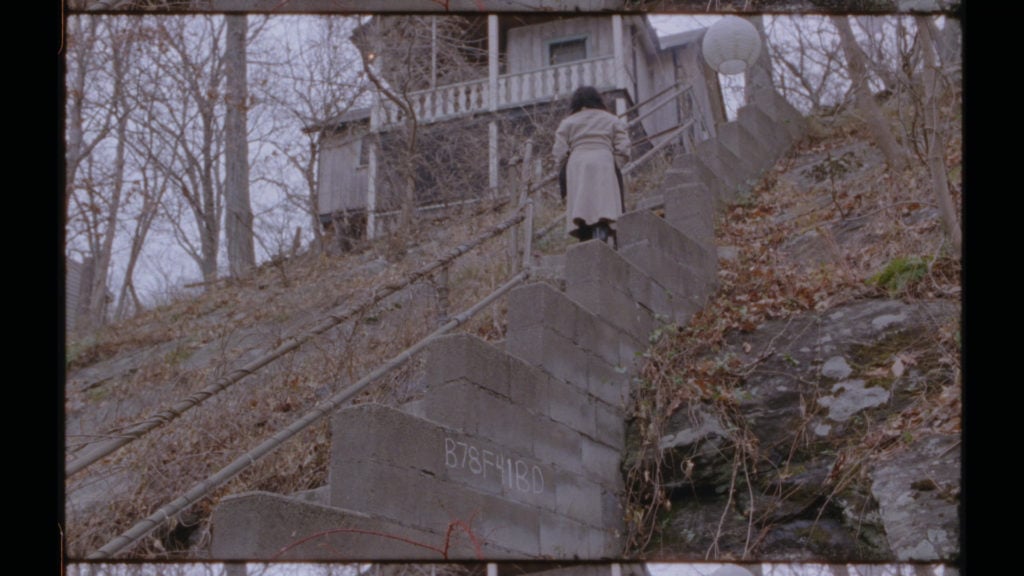
Jennifer and Kevin McCoy, Still from Public Key/Private Key (2019). Image courtesy of the artists.
What makes Public Key/Private Key most novel is the way its donor credits are distributed. The certificates are tracked on a blockchain ledger through Monegraph, the artwork title registry and marketplace that Kevin McCoy launched in 2014 (well before the art-and-blockchain frenzy peaked last year). Those with a winning essay earn not only partial donor credit for the work, but also the rights to sell, donate, or otherwise transfer their credit as they see fit forever after.
The McCoys conceived their certificate economy as a way to “extend the after-market life” of Public Key/Private Key. However, the Whitney itself will only officially acknowledge transfers made in the first six months after the certificates’ initial delivery—a period during which the trail of transactions will also be hosted on the museum’s website.
On September 5, the 50 certificate-holders will be documented as Public Key/Private Key’s “donors of record,” all of whom will be permanently credited in the museum’s online inventory and, whenever the piece is exhibited, in the corresponding wall text. Certificate transfers made later will continue to be tracked on the corresponding Monegraph blockchain but will not be updated by the museum.
By immediately giving the work’s physical components to the Whitney, the artists distill its value proposition to the visible credit for its donation—in the classical sense, the names on the wall label if and when the work is shown. The setup begs a Zen-like question about patronage: If you donate a work to a museum collection, but no one sees you do it, what was the transaction worth?
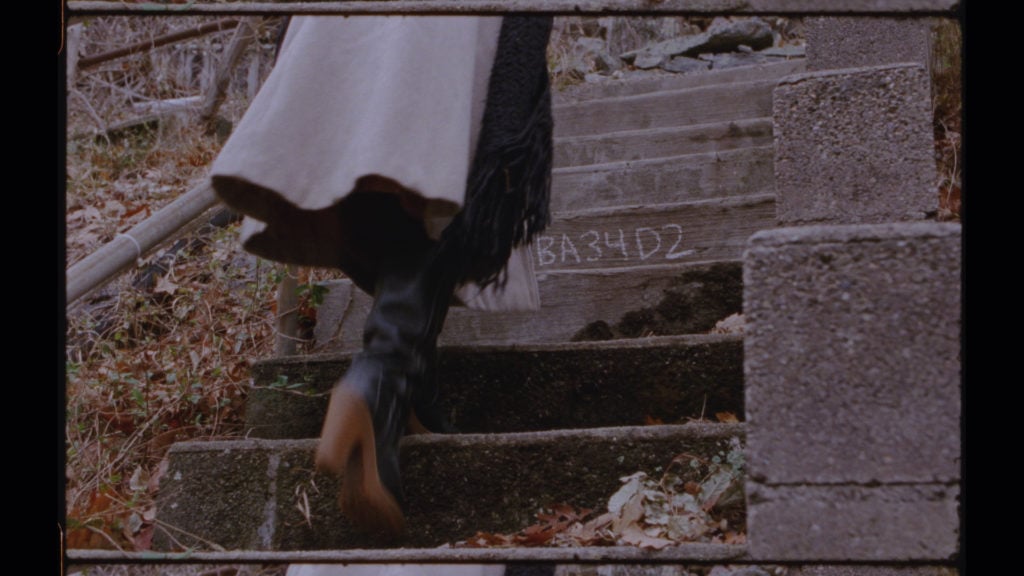
Jennifer and Kevin McCoy, Still from Public Key/Private Key (2019). Image courtesy of the artists.
Don’t expect easy answers about what’s on that roll of celluloid, either. Beyond posting an excerpt on their Vimeo page, the McCoys want to keep the film’s contents and meaning obscure.
“We thought that mirrored the obscurity of blockchain,” Kevin tells Artnet News. “It has properties of immutability, but it is conceptually abstract.” For now, all we know is that the film centers on an actor climbing a long outdoor staircase in a forest setting in Upstate New York—and periodically passing by enigmatic strings of numbers and letters inscribed in the environment. Neither the artists nor the Whitney have scheduled any screenings yet, leaving the rest of the film shrouded in mystery for the time being.
In this case, however, the package—and who gets credit for delivering it—may be more important than its contents.
The essay contest for co-ownership of Public Key/Private Key continues through April 16 via the Whitney Museum of American Art.
